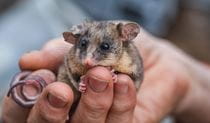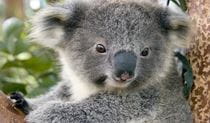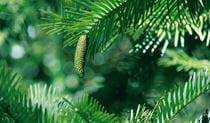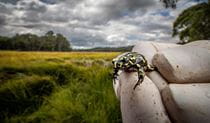Regent honeyeater
The regent honeyeater is a critically endangered native bird. Once widespread across south-eastern Australia, only around 250 to 350 birds remain in the wild, making it at risk of extinction.
Beloved by birdwatchers, regent honeyeaters are medium-sized woodland birds with striking yellow and black markings, and distinctive pink or cream skin around the eye.
On the brink
Over the last 30 years, the regent honeyeater has gone from being a common species, known from Adelaide to central coast Queensland, to critically endangered. It's estimated that there are only between 250 and 350 birds left in the wild.
Their rapid decline is mostly due to loss and fragmentation of key woodland habitat, especially box, spotted gum and ironbark, that the birds rely on for foraging and nesting. Today, there are few breeding areas remaining; 1 in north-east Victoria, and about 4 in NSW, including the Lower Hunter Valley and western Blue Mountains regions.
Although targeted conservation efforts are underway to rescue these stunning songbirds, researchers believe that the next 5-10 years will be critical to their survival.
Faltering song
For male songbirds, knowing what territorial song your species sings is critical to attracting a nesting mate. Since breeding males rarely sing while raising nestlings, young birds learn through association with other adult males after they leave the nest.
The regent honeyeater’s call is a soft metallic bell-like song. Sadly, with their population falling dangerously low, young male birds are struggling to find adult males to help them learn their ancestral song.
Instead, some young male birds adopt the songs of other local species like the eastern rosella, little wattlebird, little friarbird, spiny-cheeked honeyeater, noisy friarbird and even pied currawong.

Listen to a regent honeyeater's call
Audio © David Stewart Naturesound
Under threat
The small, disconnected populations of regent honeyeaters are critically vulnerable to disturbance, including habitat loss, fire, and climate change impacts.
The catastrophic 2019/20 wildfires impacted around 40% of the regent honeyeater’s breeding locations. Their favoured food sources are also affected. Woodland eucalypt trees may not flower for up to 5 years after severe wildfire, forcing honeyeaters to seek nectar resources on the coast.
As with most inland birds, regent honeyeaters face a rapidly changing climate, with more frequent and deeper droughts, widespread eucalypt dieback, extreme heat events and increased wildfire intensity.
Other threats to their breeding success include predation and nest-raiding from birds and mammals, and competition from larger, aggressive native birds in the honeyeater family, like noisy miners, friarbirds and red wattlebirds.
4 regent honeyeater facts
Animal facts
- Common name
- Regent honeyeater
- Scientific name
- Anthochaera phrygia
- Conservation status in NSW
- Critically endangered
Conservation activities
The regent honeyeater recovery program aims to secure the future of the species in the wild. Actions include: working to maintain a viable population through captive breeding and release into the wild, improving the quality and extent of suitable habitat, monitoring wild populations, and engaging citizen scientists and the community.
This partnership between the NSW Government’s Saving our Species program, Taronga Zoo, and BirdLife Australia has successfully bred more than 650 birds in captivity. Around 450 have since been released into the wild, with captive-bred birds observed mixing and breeding with wild bird populations.
What can you do to help?
Keep an eye out for regent honeyeaters and report sightings to BirdLife Australia. Captive-bred birds can be identified by their coloured leg bands.
Extra protections
Part of Capertee National Park has been declared an Asset of Intergenerational Significance (AIS), providing the strongest legal protections for the regent honeyeater and its habitat, to ensure its survival for future generations.
You might also like
-

Protecting threatened species in parks
Around 84% of the approximately 900 threatened species in NSW are found in our national parks and reserves. Find out what we're doing to protect threa...
-

Saving our Species conservation program
Today, we're at risk of losing nearly 1000 of our state's native animals and plants. That's why the NSW Government established Saving our Species. It'...
-

Assets of Intergenerational Significance (AIS)
Assets of Intergenerational Significance (AIS) are declared to bolster protections for an area with exceptional environmental or cultural values, like...
-

Threatened Species Framework for zero extinctions
The NSW National Parks and Wildlife Service (NPWS) Threatened Species Framework outlines a series of actions to meet our commitment of zero extinction...









